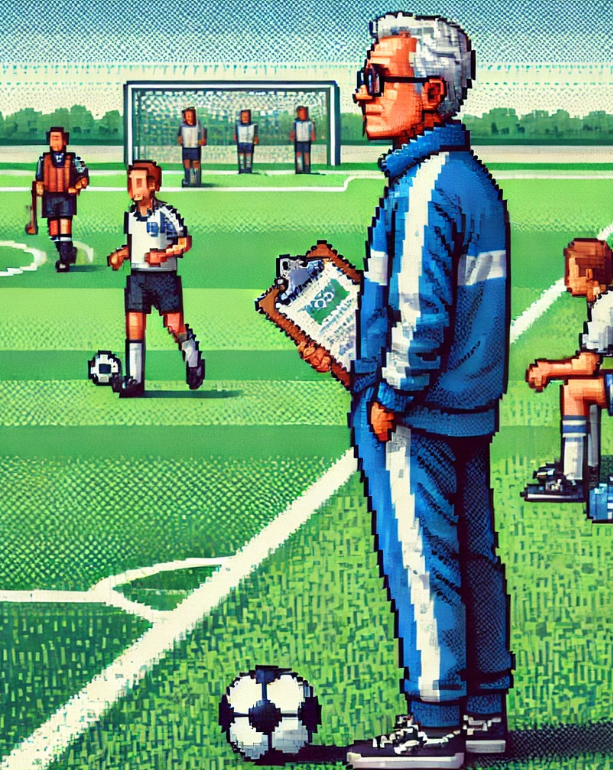
How Tactics Win Games
Soccer is a beautiful, chaotic game where victory hinges on more than just physical skill. It’s also about how well teams can adapt to the flow of the game. Whether you’re a coach or a player, understanding the tactical side of soccer can give you an edge over the competition. This blog dives into recent research that breaks down the tactical elements that can predict a team’s success. The findings are not just numbers on a page—they’re insights that you can apply directly to your next practice or match. So, let’s explore how strategic soccer thinking can lead to real-world victories.
Why Tactics Matter
Every soccer coach knows that the game moves fast. You’ve got to be on your toes, making split-second decisions about whether to press high, sit deep, or play long. But the most successful teams don’t just rely on instinct—they have a game plan. Recent research has revealed that adopting specific playing styles in key tactical situations can make or break a game. It turns out that it’s not just about having possession of the ball, but how you use that possession that truly matters.
Imagine a chess game, but instead of pieces on a board, you’ve got 22 players darting across a field. Just like chess, each move builds off the last, and the wrong decision at any moment can cost you. But with the right tactics in place, you increase your chances of getting the win.
The Power of Possession
You’ve probably heard it a thousand times: possession wins games. But it’s not enough to simply keep the ball. This study emphasizes how possession is used. Teams that dominate possession in the middle of the field, using short passes and orchestrating controlled build-ups, tend to win more often.
Let’s break this down: when a team holds onto the ball through quick, short passes, they’re able to break down the opponent’s defense. This doesn’t mean just aimlessly passing around the backline; it means controlled, purposeful possession that moves the ball forward and creates scoring opportunities. Think of it as setting up a checkmate in chess, with every pass leading to a more dangerous position for the opponent.
Counterattacks: Strike Fast, Win Faster
While controlling possession is key, soccer is unpredictable. And that’s where counterattacks come in. When you lose the ball, how quickly can your team shift from defense to offense? The research shows that teams with strong counterattacking abilities are more likely to win.
Counterattacking soccer is all about speed and exploiting defensive gaps. It’s the difference between patiently setting up a goal and catching your opponent off guard, sprinting down the field before they have a chance to recover. Some of the most exciting moments in soccer come from these lightning-fast counterattacks. For players and coaches, drilling quick transitions and practicing those sprints forward can make all the difference.
Central Play vs. Crossing
One of the more surprising insights from this study is that teams that focus on central play, rather than crossing from wide areas, tend to have better results. Many soccer strategies rely on whipping in crosses from the wings, but successful teams are shifting their focus to direct attacks through the center of the pitch.
Why? Central play allows teams to maintain control and keeps the ball in areas where scoring chances are more likely to develop. Attacks from the middle, especially when combined with quick passing and ball movement, can break down defenses more effectively than a hopeful cross into the box.
Think of it like threading a needle: precision, timing, and close control are required to pierce through the heart of the defense, while crossing relies more on chance and a good header.
Aggressive Defense: High Risk, High Reward
What happens when you lose possession? Your team’s defensive strategy is just as important as your offensive plan. High-pressing defense—where players aggressively try to regain possession in the opponent’s half—significantly increases a team’s chances of winning.
When done correctly, pressing high up the field forces the opponent to make mistakes, leading to quick turnovers and potentially dangerous scoring opportunities. It’s a risky strategy, though. Teams that press too high without proper organization can leave themselves vulnerable to counterattacks. However, when the press is well-coordinated, it can completely disrupt the opponent’s game plan.
Avoiding the Offside Trap
Here’s a fascinating finding: teams that get caught offside more frequently tend to have a better chance of winning. It seems counterintuitive, but being caught offside could indicate a team’s willingness to play aggressively and take risks in the final third of the field.
Winning teams are often the ones willing to push the boundaries, staying on the edge of the defense and trying to sneak past the backline. It’s like a calculated gamble in poker—sometimes it pays off big.
On the flip side, teams that rely heavily on trapping their opponents in offside positions don’t fare as well. The study suggests that defensive offside traps can backfire, leading to dangerous situations if not perfectly timed.
Applications
Now that we’ve covered the major tactical findings, let’s look at how this can be applied directly to your soccer team. Whether you’re a coach, player, or club manager, these takeaways can improve your chances of success on the field.
1. Coaching
- Focus on Possession Drills: Encourage short passing and controlled build-up play in the midfield. Use small-sided games to practice maintaining possession under pressure.
- Develop Quick Transitions: Run drills that focus on fast counterattacks after losing possession, ensuring your players are always ready to switch from defense to offense.
- Minimize Crosses: While crosses can be useful, emphasize central attacks. Teach your players to look for opportunities to cut inside and drive through the middle.
2. Player Development
- Encourage Aggressive Play: Don’t be afraid of being caught offside. Teach your forwards to time their runs and take risks.
- Improve Tactical Awareness: Ensure players understand the importance of both offensive and defensive transitions. Use video analysis to highlight effective counterattacks and pressing strategies.
3. Club Management
- Hire Tactically Savvy Coaches: The study shows that teams with clear tactical strategies outperform those without. Investing in coaches who understand these nuances can significantly improve team performance.
In the ever-changing game of soccer, strategy is everything. With a clear tactical approach, focusing on possession, counterattacking, and defensive pressing, you can turn the chaos of the game into a controlled pathway to victory. Now it’s your turn to take these insights onto the field and see how they can transform your game.
Are you ready to delve deeper into the science and strategy of soccer?
This Week in Soccer offers you a unique blend of expert analysis, engaging infographics, and practical insights. Subscribe to our newsletter and stay ahead of the game with the latest in soccer analytics and coaching strategies. Make the move from spectator to strategist. Subscribe now!



